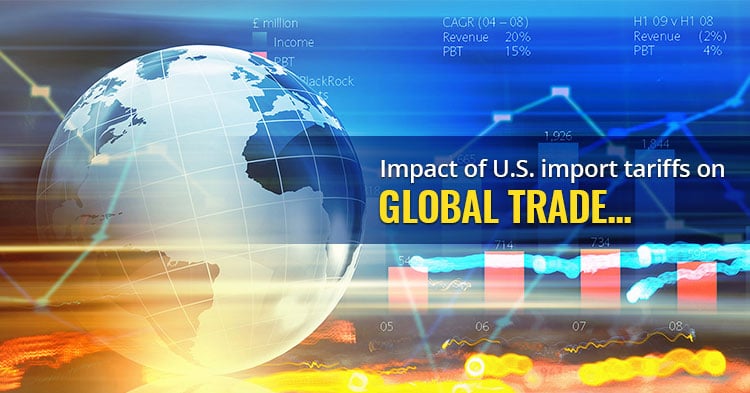
Recently, there was a major furore when Donald Trump proposed import tariffs of 25% on Steel and 10% on aluminium imported into the US. That would immediately mean that the steel and aluminium consumed in the US becomes more expensive and triggers inflation. However, the immediate reaction was threats of retaliatory tariffs. The EU, which is a major exporter threatened to impose retaliatory import tariffs on US imports ranging from Coke to Levis Jeans to Budweiser Beer to Harley Davidson Motorcycles. China and the rest of Asia are among the largest exporters of metals to the US and China has already threatened to trigger a trade war.
It would be interesting to remember two things about a trade war. Firstly, trade wars were last seen in the 1920s and 1930s when countries tried to encourage domestic industry by putting high tariffs on imports. Eventually, this led to rising inflation, production inefficiencies and finally resulted in the Great Depression of 1930s. Rarely has any nation benefited from a trade war. Secondly, trade wars tend to eventually degenerate into currency wars. When every country puts higher duties on imports, the only way left is for countries to devalue their currencies to make exports cheaper. This again leads to competitive devaluations creating losses across the globe. But first, why did the US take up the issue of trade war at this juncture…
Why is the US keen to protect domestic metal industry?
To understand this topic in perspective, it is essential to look at the graph below where the US output of aluminium over the years is compared with Chinese exports during the same years.

Source: Bloomberg
Over the last 20 years, the US production of aluminium has fallen by over 2/3rd and that gap has been filled up by imports from China. Obviously, Trump is of the view that the US metal industry has actually suffered due to cheaper imports from other countries. Trump’s allegation is also that countries like China are able to export cheap aluminium and steel because their government gives them production subsidies which artificially reduces their production costs and allows them to dump these metals across the world at low rates. Trump made the issue of America’s rising trade deficit a major election issue and he is only following up on that.
Aluminium is one side of the story. Look at how China has dominated the 1.70 billion metric tonnes steel industry. The chart below captures the relative market share of countries in steel output…

Like in case of aluminium, steel too is dominated by China and the US has actually become a marginal player in the production of steel. It is to rectify this imbalance that Trump has proposed the tariffs on steel and aluminium. But, how will it impact global trade?
Impact of US Tariffs on global trade…
We see the following implications if the US goes ahead and implements the stringent tariff measures…
The big risk for India will not be from the tariff imposition but the retaliatory tariffs. That is when it becomes a global phenomenon.
Published on: Mar 26, 2018, 12:00 AM IST
We're Live on WhatsApp! Join our channel for market insights & updates